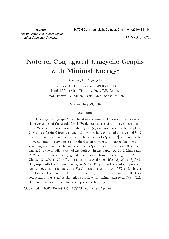摘要
The energy of a graph G is defined as the sum of the absolute values of all the eigenvalues of the graph. Let U(k) denote the set of all unicyclic graphs of order 2k which have a perfect matching. S(3)(1)(k) denotes the unicyclic graph on 2k vertices obtained from a triangle C(3) by attaching one pendant edge and k-2 paths of length 2 together to one of the vertices of C(3), and S(4)(1)(k) denotes the unicyclic graph on 2k vertices obtained from a cycle C(4) by attaching one path P of length 2 to one of the four vertices of C(4) and then attaching k - 3 paths of length 2 to the middle vertex of the path P. In the paper "X. Li, J. Zhang and B. Zhou, On unicyclic conjugated molecules with minimal energies, J. Math. Chem. 42 (2007) 729-740", the authors proved that either S(3)(1)(k) or S(4)(1)(k) is the graph with the minimal energy in U(k). They remarked that computation result shows that the energy of S(3)(1)(k) is greater than that of S(4)(1)(k) for larger k. However they could not find a proper way to prove this, and finally they conjectured that S(4)(1)(k) is the unique graph with minimal energy in U(k). This short note is to give a confirmative proof to the conjecture.
- 出版日期2010
- 单位南开大学
